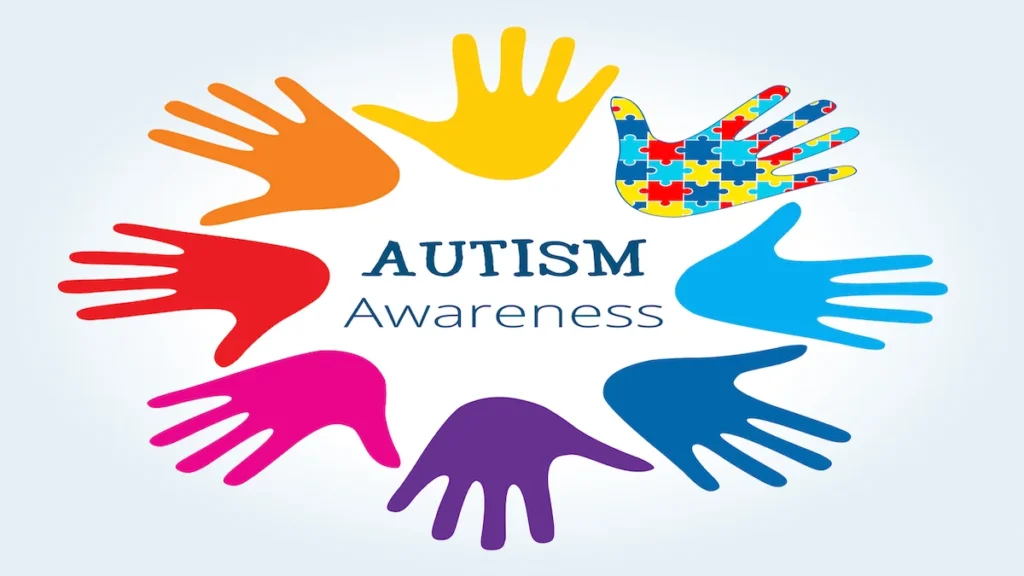Autism Awareness Day is celebrated every year on 2 April all over the world. The purpose of this day is to spread awareness about Autism Spectrum Disorder (ASD) among people, break myths, and promote acceptance.
Even though there are many campaigns and awareness programs about autism these days, there are still myths and misconceptions in the minds of many people. Therefore, this day reminds us that not only awareness, we also have to take steps towards acceptance.
In this blog, we will know what autism is, what are the myths spread about it and how we can turn this awareness into positivity in society.
What is autism?
Autism Spectrum Disorder (ASD) is a neurological condition that makes a person’s thinking, feeling, social interaction and behaviour different. It is a “spectrum”, meaning its symptoms can appear differently in each autistic person – someone may be very independent while someone else may need more support.
Autism is not a disease, and there is no “cure” for it either – it is a distinct neurological difference that lasts life-long.

Why is Autism Awareness important?
Even today autistic people face misunderstanding, social exclusion and judgement in society. Only when people understand their challenges and strengths through autism awareness can we create a truly inclusive and supportive society.
Awareness:
- People’s misconceptions are cleared
- Autistic children and adults get better support
- Schools, offices and communities become more inclusive
Common Myths Related to Autism – And Their Reality
Myth 1 All autistic people are the same
Reality: Every autistic person is unique. Some have mild symptoms, while others may need more support.
Myth 2 Autistic people do not feel emotions
Reality: They do feel emotions, but the expression may be different. They also feel love, sadness, and happiness.
Myth 3 Autism is caused by wrong parenting
Reality: Autism is a genetic and neurological condition. It has nothing to do with parenting.
Myth 4 Vaccines cause autism
Reality: This is a completely wrong and disproven myth. Research clearly says – vaccines have no link with autism.
Myth 5 Autistic people can never be independent
Reality: Many autistic people study, work, and live their lives independently.
How to spread Autism Awareness?
1. Education first
Educate yourself and others about what autism is, what the myths are and how to support it.
2. Use respectful language
Avoid words like “Autism se suffer karta hai”. Instead, say “autistic person” or “person with autism” – as per the person’s preference.
3. Support autism-friendly initiatives
Support brands, businesses and organisations that employ and train autistic people.
4. Spread positivity on social media
Share true facts and inspiring stories related to autism on your platform. Use hashtags like #AutismAwareness #DifferentNotLess.
5. Celebrate neurodiversity
Every brain is different. See autism as a difference, not a disability.
How to increase Autism Acceptance in Schools and Offices?
In schools
- Teachers should be trained to identify and support autistic children
- Individualized Education Plans (IEPs) should be implemented
- Other children should also be given awareness about neurodiversity
In workplaces
- Provide Quiet zones and flexible working hours
- Recognize the strengths of autistic employees
- Promote equal opportunity and inclusive hiring
From awareness to acceptance
Awareness is just the first step. The real goal is acceptance — that is, accepting autistic people as they are, supporting them without judging them.
Only when society starts seeing autism as a difference, not as a disability, can we bring about real change.
Global Impact of Autism Awareness Day
The United Nations officially announced World Autism Awareness Day in 2007. Since then, every year on April 2, monuments around the world are lit up in blue (Light It Up Blue) — which has become a symbol of solidarity and awareness.
But more than light, we need action — to bring about change in schools, policies, and social behavior.
Real-life Inspirational Stories
Many autistic people have become inspirations today:
- Temple Grandin – a world-famous scientist and autism advocate
- Many autistic children are excelling in coding, music, art, and sports
- These people prove that autism is not a limitation, but a different perspective
Conclusion
Autism Awareness is a movement — not just to recognize autism, but to give dignity and respect to autistic people. When we break myths and spread acceptance, we create a world where all people – with any neurological difference – can flourish.
This Autism Awareness Day, let’s build a society that is inclusive, not judgmental. Where people celebrate differences and give everyone equal opportunities.
Start with Autism Awareness, and reach Acceptance – that’s real change.
